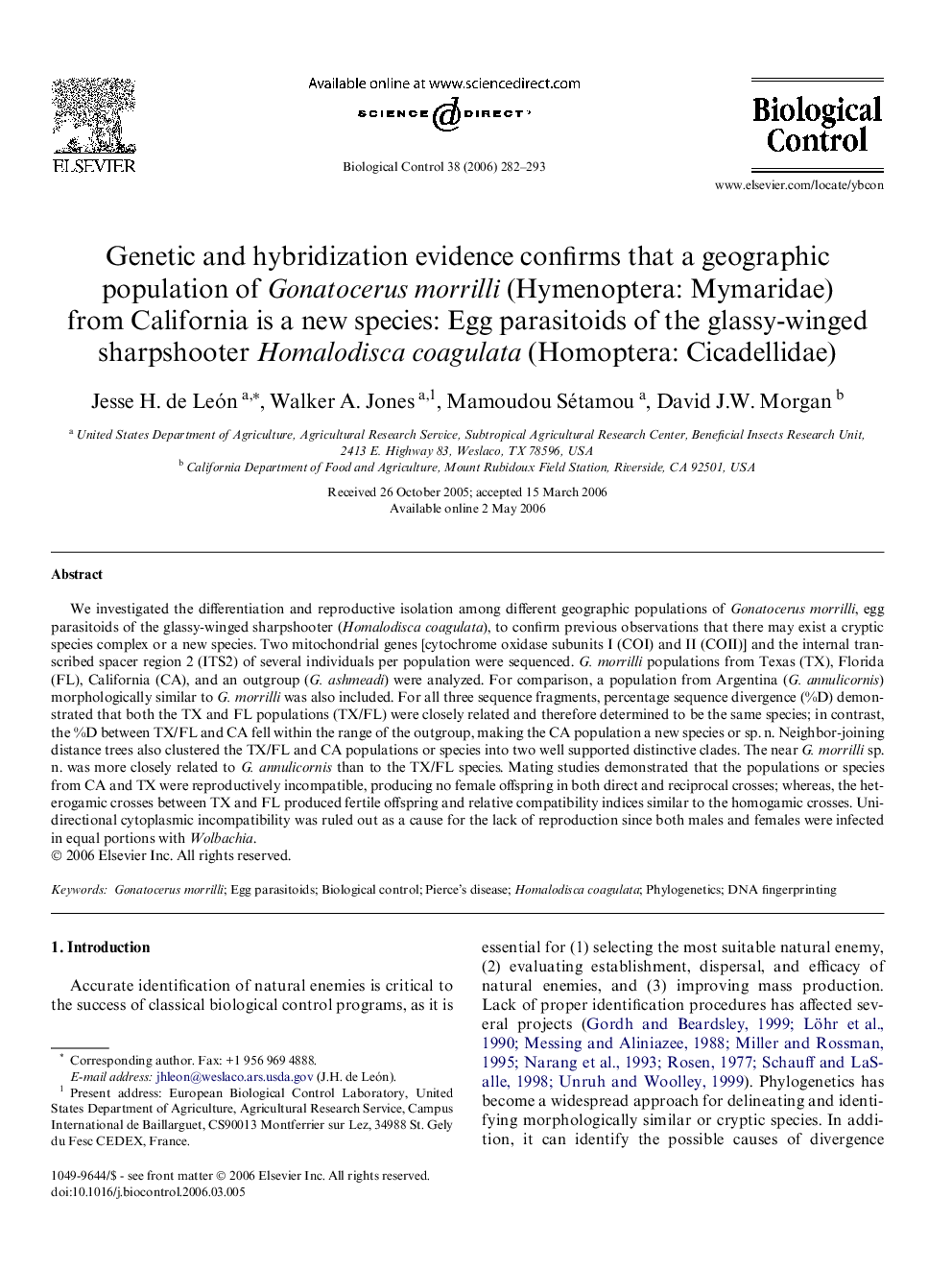| کد مقاله | کد نشریه | سال انتشار | مقاله انگلیسی | نسخه تمام متن |
|---|---|---|---|---|
| 4505332 | 1321138 | 2006 | 12 صفحه PDF | دانلود رایگان |

We investigated the differentiation and reproductive isolation among different geographic populations of Gonatocerus morrilli, egg parasitoids of the glassy-winged sharpshooter (Homalodisca coagulata), to confirm previous observations that there may exist a cryptic species complex or a new species. Two mitochondrial genes [cytochrome oxidase subunits I (COI) and II (COII)] and the internal transcribed spacer region 2 (ITS2) of several individuals per population were sequenced. G. morrilli populations from Texas (TX), Florida (FL), California (CA), and an outgroup (G. ashmeadi) were analyzed. For comparison, a population from Argentina (G. annulicornis) morphologically similar to G. morrilli was also included. For all three sequence fragments, percentage sequence divergence (%D) demonstrated that both the TX and FL populations (TX/FL) were closely related and therefore determined to be the same species; in contrast, the %D between TX/FL and CA fell within the range of the outgroup, making the CA population a new species or sp. n. Neighbor-joining distance trees also clustered the TX/FL and CA populations or species into two well supported distinctive clades. The near G. morrilli sp. n. was more closely related to G. annulicornis than to the TX/FL species. Mating studies demonstrated that the populations or species from CA and TX were reproductively incompatible, producing no female offspring in both direct and reciprocal crosses; whereas, the heterogamic crosses between TX and FL produced fertile offspring and relative compatibility indices similar to the homogamic crosses. Unidirectional cytoplasmic incompatibility was ruled out as a cause for the lack of reproduction since both males and females were infected in equal portions with Wolbachia.
Journal: Biological Control - Volume 38, Issue 2, August 2006, Pages 282–293